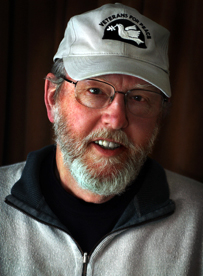Picasso and other artists have echoed the idea that "all art is sham." Is the observer or critic able to ferret out and articulate that sham? The most brilliant artist can be a self-centered monster whose sham is above and beyond the grasp of ordinary people. Consider the master Picasso, whose views on women were akin to Donald Trump's. "For me," Picasso said, "there are two kinds of women -- goddesses and doormats." Trump boasted how celebrity permitted him to grab women by the crotch, the doormat types, while his wife Melania is a classic goddess. Consider film director Sydney Pollack's lament, above, about politics and show business. In the age of social media, the line between pop culture and politics is fuzzy -- if it exists at all anymore.
What's going on here? Writers like Daniel H. Pink, in a 2005 book titled A Whole New Mind: Moving from the Information Age to the Conceptual Age, think it has something to do with the nature of the times in relation to the nature of the human brain and how they work together. "[T]he keys to the kingdom are changing hands," Pink writes in his introduction. "The future belongs to a different kind of person with a very different kind of mind -- creators and empathizers, pattern recognizers, and meaning makers. These people -- artists, inventors, designers, storytellers, caregivers, consolers, big picture thinkers -- will now reap society's richest rewards and share its greatest joys." Charles Kenny in The Right Brain Way: Drive Your Brand With the Power of Emotion feels the same way; he runs a marketing and advertising service that focuses on getting deep into consumers' and voters' right brains to find what really moves them, so one can attach one's product to that emotion.
Metaphor is critical. The fullness of existence is beyond our grasp as human beings, so we design metaphors to get a grip on it. Metaphors amount to the overlap with familiar things we can get our mind around; they help us make sense of things we can't understand without them. But they're a two-edged sword. In the hands of the amoral, the power-hungry and the ruthless, metaphoric thinking can be oppressive and dismissive. For example, Make America Great Again as a metaphor for a better future hinges totally on how one defines great. If the metaphor is associated with the "greatness" of America's past of Manifest Destiny, Jim Crow and the power of keeping people in line by bombing them, then, it's a case of one man's nostalgia is another's nightmare.
How should journalists respond to this phenomenon? The "resistance" among elements of the mainstream media has been amazing to witness. The New York Times and The Washington Post have been at war with the new president; there's no other word for it. But can that last? Following the Syrian tomahawk raid, it's common now to hear a sense of relief that Trump has come around and is acting like past presidents. There are adults in the room is a favored metaphor. The trigger for this was the tomahawk raid against Assad. Now the Mother Of All Bombs in Afghanistan.
Bombing as a "final solution" to problems has become a particularly evil aspect of American Exceptionalism. Mr. Trump is suddenly "presidential" because he's killing "bad guys" en-mass by bombs. It's a major metaphor of power that will assuredly bite us in the ass somehow in the future. We all know by now that one American life can count for much more than the agony of the many anonymous lives we snuff out, out of sight, out of mind. As metaphor, one dead American may equal or even transcend a MOAB strike. After all, it was shock and awe and the US killing campaign in Anbar Province, Iraq, that spurred the pathology of ISIS in Sunni Iraq. As this new reactionary regime finds its footing, how long will the "resistance" hold out in the mainstream? One can only hope the political opposition finds and organizes its real grassroots power as the 2018 mid-term elections approach. It's hard to see much hope in a revolution.
Given the right-brain realities associated with the power of emotions, art and story, maybe it's time to develop outright, open artistic hostility of the sort we've seen in oppressive regimes around the world. Street theater and art has always been at the barricades. In the United States, we do still have freedoms. True, they may be over-mythologized and contingent on having money and resources; but, still, this is not Soviet Russia or even Putin Russia. Murder isn't a tool of purging, here. Yet.
On one of my trips to El Salvador in the late 1980s, I had the privilege of sharing refreshments and papusas (tortillas stuffed with cheese and meat, a Salvadoran delicacy) with Lutheran Bishop Medardo Gomez. Weeks earlier, he had been snatched off the street by masked men in a car; he was beaten and humiliated as they drove him around the city. He thought he was a dead man. I will never forget the lesson this deeply human, humble man told us he'd learned from this episode. They scare you and intimidate you, expecting you to do the natural thing, to hide and keep silent. But the smart thing, he said, is to do the exact opposite: become as public as you can and make as much noise as you can. Raise the stakes of killing you. It was why he agreed to speak with me and my gringo friends. We had blue passports and maybe we knew US congressmen. The message was profound for me; it made me a better, stronger person facing the less violent, but equally exacerbating politics of North America.
(Note: You can view every article as one long page if you sign up as an Advocate Member, or higher).





